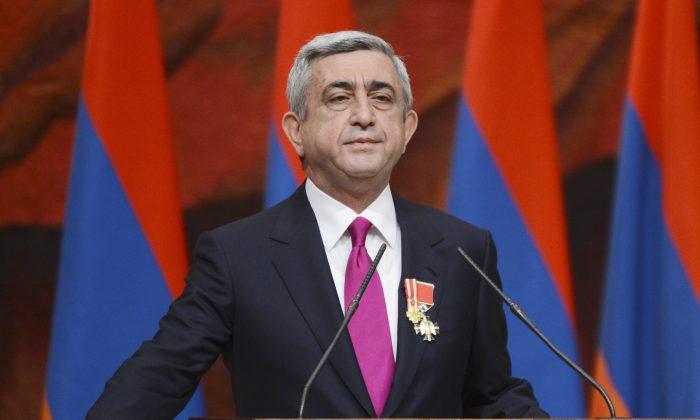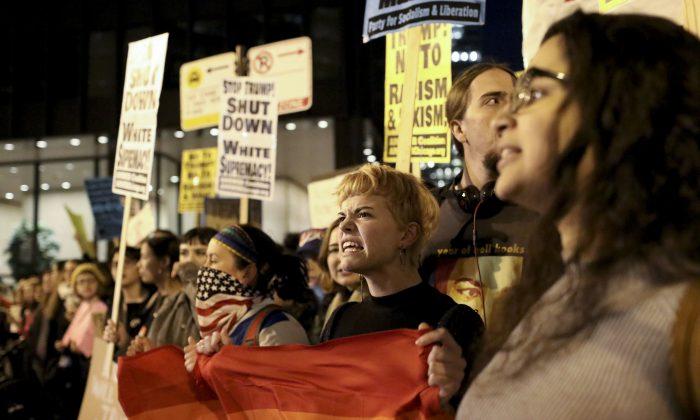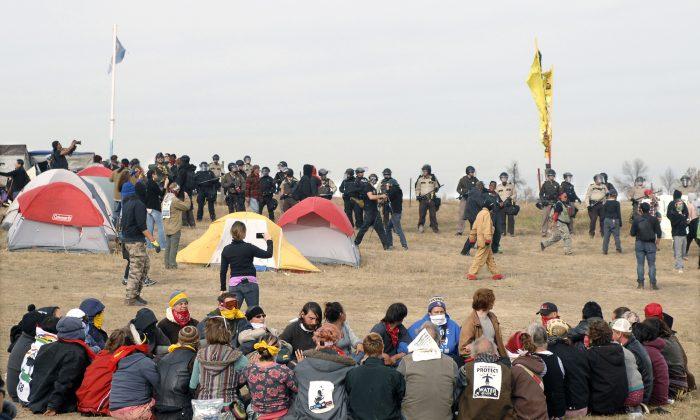Armenian President Serzh Sargsyan visited MIT in Cambridge, Massachusetts, on March 29. Several weeks before that date, his press attaché invited a small group of notable Armenian-American men and women to meet with him in one-on-one, private conferences. One such person was three-time Nobel Peace Prize nominee, Dr. Simon J. Simonian, whose teamwork with two other doctors created the vaccine that eradicated smallpox. Here, exclusively to the Epoch Times, is Dr. Simonian’s journal of that day and that man.

“President Sargsyan had invited some one hundred scholars of Armenian descent who were either currently studying at America’s top eight universities or had graduated as alumni from these universities. The eight universities are ranked by the Shanghai ranking system as follows: Harvard; Stanford; MIT; University of California, Berkeley; Princeton; California Institute of Technology; Columbia University; and the University of Chicago. … The president had also invited a number of leading Armenian-American scientists to participate.
“I being one of the invited scientists, I expressed my profound gratitude and respect to the president for his foundation and development of the Luminary (Luys) Foundation in 2008. The Luys Foundation funds fifty percent of the cost of the student’s education till graduation. After graduation, the students are encouraged to pursue doctoral and post-doctoral scientific disciplines, the cost of which is funded by the universities, for them to become competent professionals in research, creativity, innovation, and invention. These innovators are then given opportunities to find start-ups in Armenia or anywhere else of their choice in the world for the benefit of citizens everywhere. Also, mentoring and scientific collaboration is encouraged between experienced and younger scientists. At present, there are 420 Luys scholars. Each year, one hundred new scholars are recruited.
“The president met one-on-one with the scientists. During our meeting, he requested to see my curriculum vitae. I congratulated the president and offered my help in his impressive programs to the eliminate corruption and poverty and install government policies of ethics, national arts, and creative thinking, and to pursue ongoing policy’s that will lead to an obtainable prosperity.
“I found the man to be authentic, in his being his own person and a positive force in his mastery of his good office. The man, the president, the world leader was one person, complete unto himself. He brought with him the skills of the politician, the imagination of the poet and the creative ability of a dedicated world leader. Some people live the life of leadership. This man brings the creative life to leadership.
“Then there was a Gala Dinner and its Program of Celebration for A New Generation of Armenian Thinkers. These innovators are seeding positive, creative change in the homeland of Armenia, as well as contributing to the advancement of the world.
“The event was dedicated to the 25th anniversary of independence of the Republic of Armenia. It was under the patronage of Mr. Serzh Sargsyan, president of the Republic of Armenia, founding president of the Luys Foundation. It was hosted by the Noubar and Anna Afeyan Foundation.
“The president spoke on ‘Education and Human Capital: The Path to Sustainable Development.’ He exemplified the continuity of the leadership of his ancestral forebears who for six thousand years have inspired, sponsored, and encouraged creativity, innovation, and the evolution of culture, civilization, and society for the common good and useful purposes, in the highlands of Armenia.
“Other speakers included were Vigen Sargsyan, chief of staff to the president; Grigor Hovhannissian, the Armenian ambassador to the United States; and Ms. Jacqueline Karaaslanian, executive director of Education for the Luys Foundation.
“I spoke on ‘Strategic Planning for the Common Purpose of Collective Collaborative Creativity and Mutual Trust.’
“New archeological evidence was brought forth on ‘Human Civilization and the Highlands of Armenia’ that a significant part of the earliest advanced human civilization originated, was created and developed in the ancestral lands of Armenia adjacent to the freshwater rivers of Tigris and Euphrates some 6,000 years ago. Excavations in Shengavit, near Yerevan, the capital of Armenia, by Professor Mitchell Rothman, founding chair, Department of Archeology, Widener University, Chester, Pennsylvania, collaborating with Hagop Simonyan, director of Archeology for the Armenian Ministry of Culture, have revealed an advanced agricultural age, agricultural products, with grapes, a wine press, domestication of animals, goats, sheep, the horse; dwellings; leather shoes; the invention of early writing; iron and metal tools and jewelry, among many other cultural advances. They believe these creative inventions were transferred southward to Judea and to Egypt, eastward to India and China, northward to Russia, and westward to Greece and Italy into Europe.”
Reflections
Serzh Sargsyan was born on June 30, 1954. He entered Yerevan State University in 1971, served in the Soviet Armed Forces during 1971–72, and graduated from the Philological Department of Yerevan State University in 1979. In 1983, he became chairman of the Armenian Chess Federation. In addition to his native Armenian, he is fluent in Russian.
He has served as the Armenian Minister of Defense, head of the State Security Department and, later, the Minister of National Security. From 2000 to 2007, he served as the Defense Minister. In 2007, he was appointed as the Prime Minister of Armenia.
Sargsyan won the February 2008 presidential election with the backing of the ruling Republican Party of Armenia, a party in which he serves as chairman, and took office in April 2008. On Feb. 18, 2013, he was reelected as president.
During Sargsyan’s presidency, freedom of speech and freedom of the press in general have improved in Armenia. Internet penetration has risen sharply—from 6.2 percent in 2008 to 37 percent in 2011—thus providing greater access to online media. The number of Armenian websites has grown rapidly, and the blogosphere has skyrocketed, with over 10,000 bloggers in Armenia by 2012.
There were an estimated two million Armenians living in the Ottoman Empire before the First World War. Approximately one and a half million Armenians were killed from 1915–1923. The remainder was either Islamized or exiled.
At the beginning of his first term of office, Sargsyan pledged to continue Armenia’s policy toward Turkey and to normalize relations without any preconditions, while still continuing to strive for international recognition of the 1915 Armenian Genocide.
Before there was language, there were hordes. After language, there were societies, and with social structure came literacy and the means of communication necessary to form nations. After nations, there was leadership and the evolved concept of a person being able to serve the masses collectively.
And after language, social structure, literacy, communications, nation-building, and leadership came faith and responsibility—the faith in your social ability to select the best leader and the responsibility to support the leader’s main political talent, i.e., the ability to speak to the many, but to make it appear as though he is addressing the individual while working on behalf of the masses.
The great public servant grasps the impractical concept of a person being able to serve the masses collectively with the allure of personal relevance. And with such public service, there can come hope and trust.
So after nations are honored, there is still hope explored and trust rewarded, and a president who has “the skills of the politician, the imagination of the poet and the creative ability of a dedicated world leader.”
Shelley B. Blank has worked with major national and international newspapers as a journalist as well as a corporate executive. He has produced programs for Public Radio and lectured on modern multimedia communications and technology.



